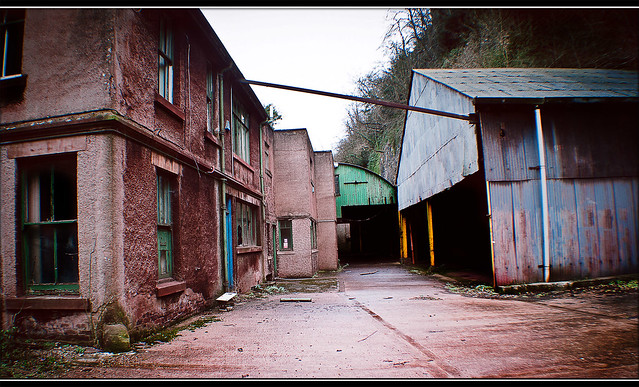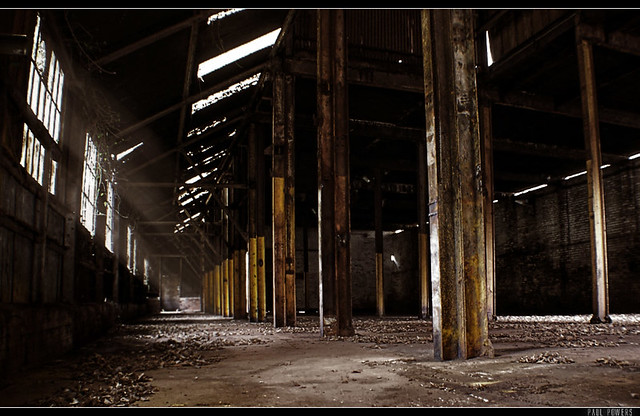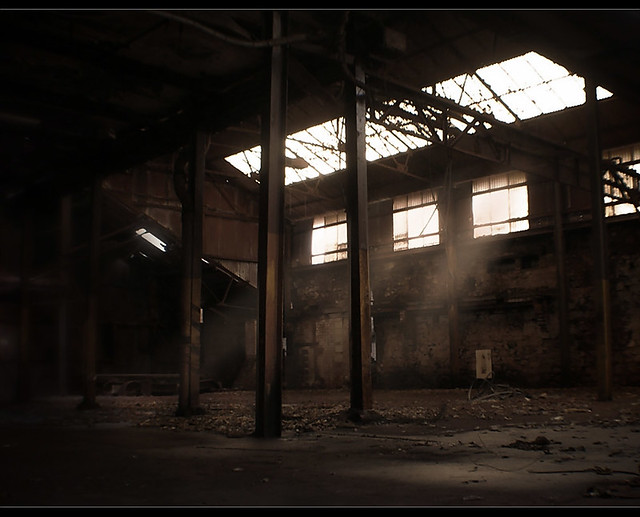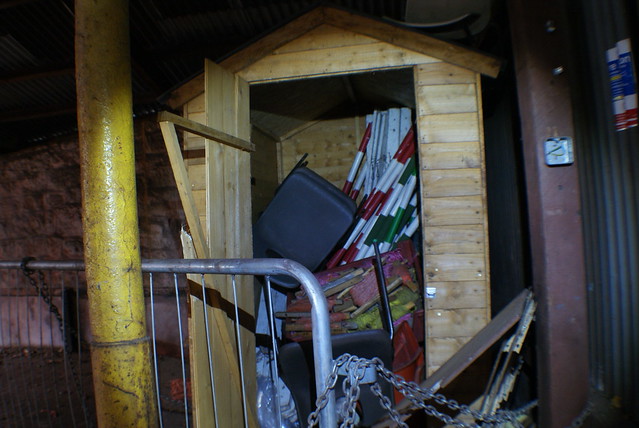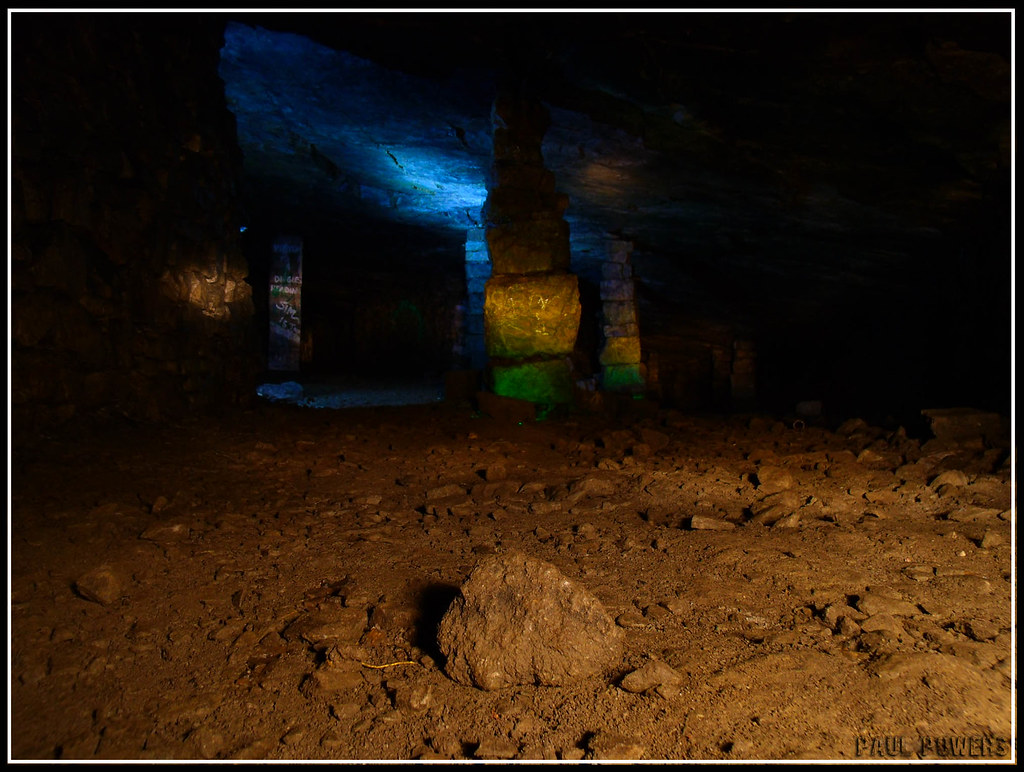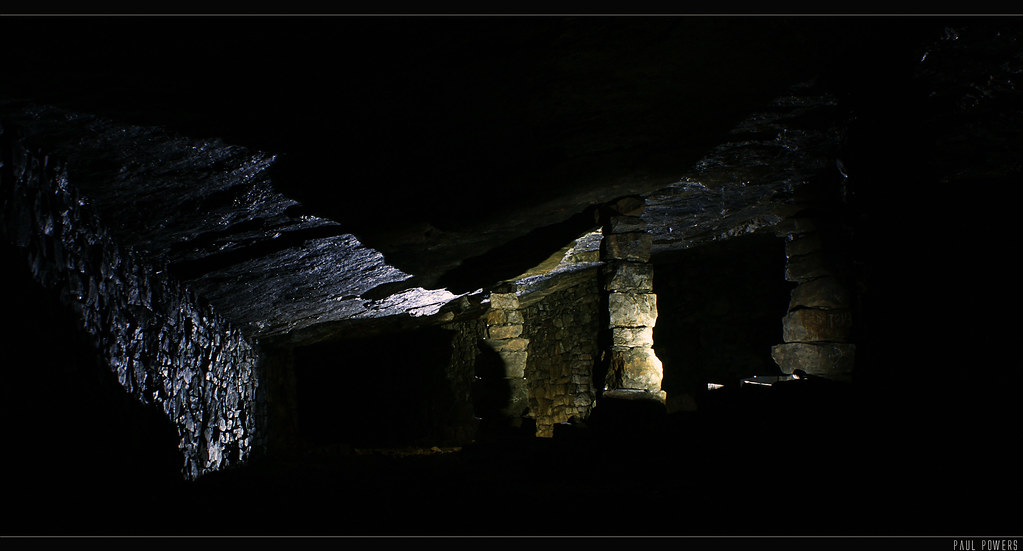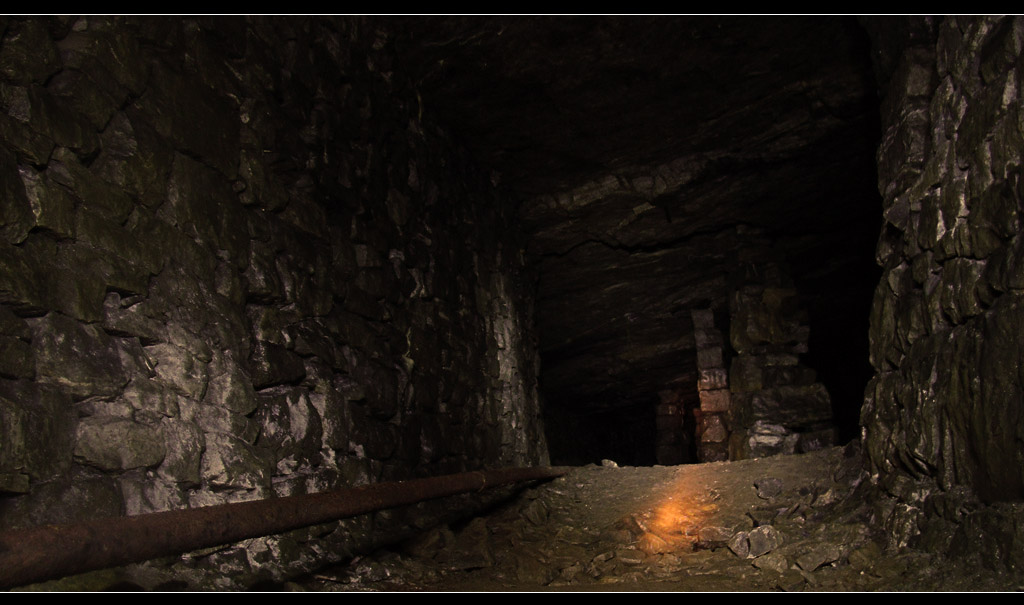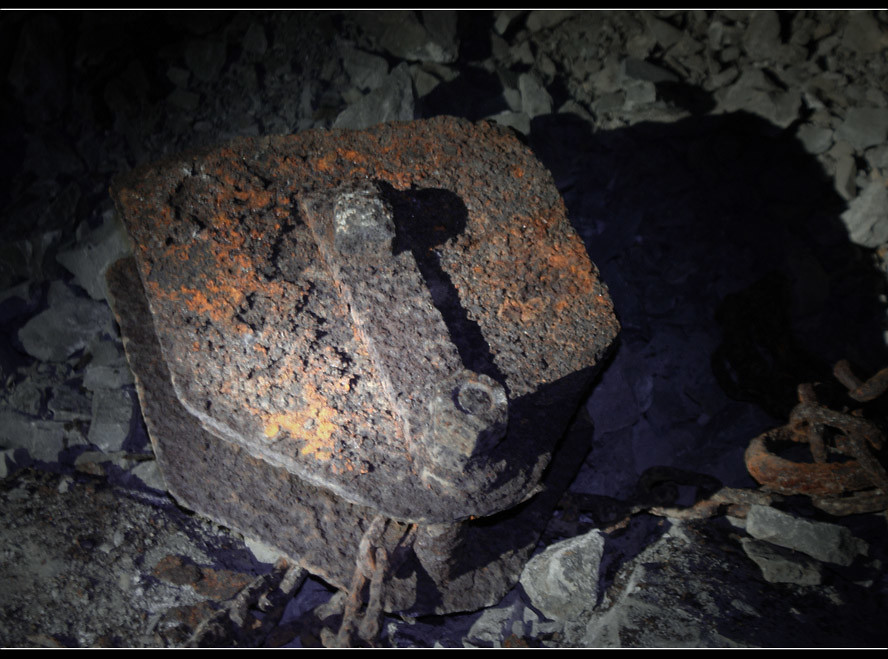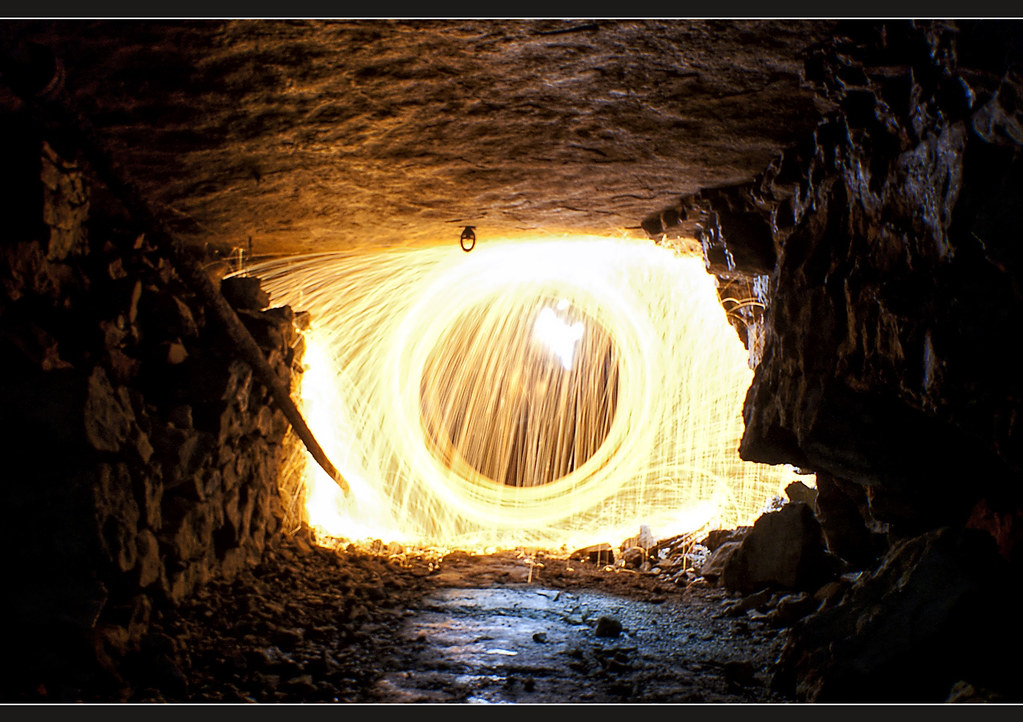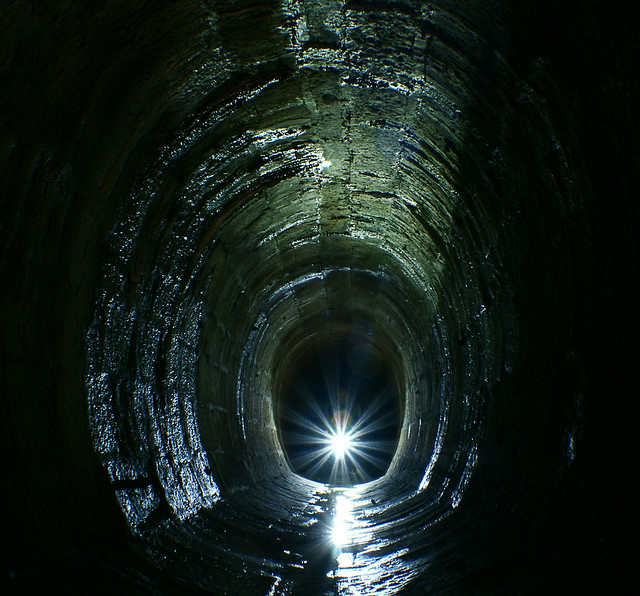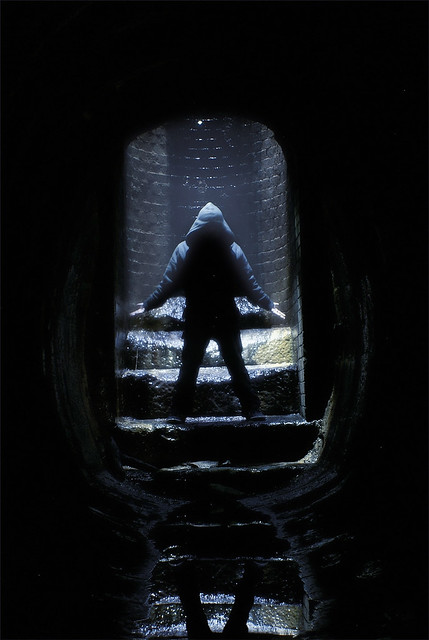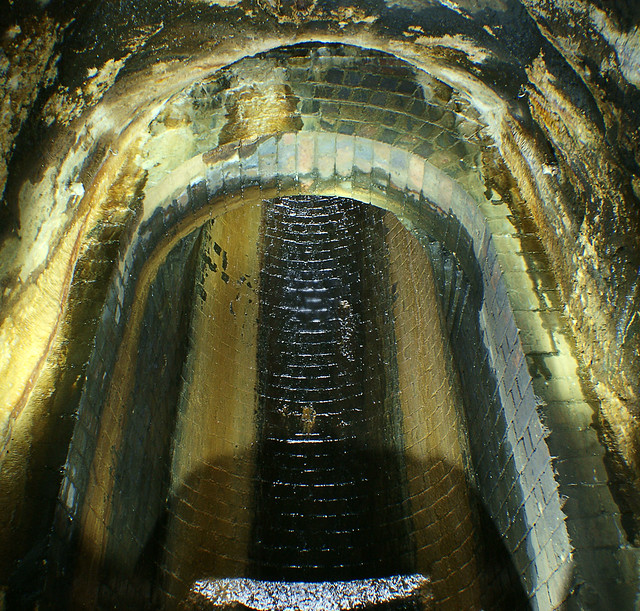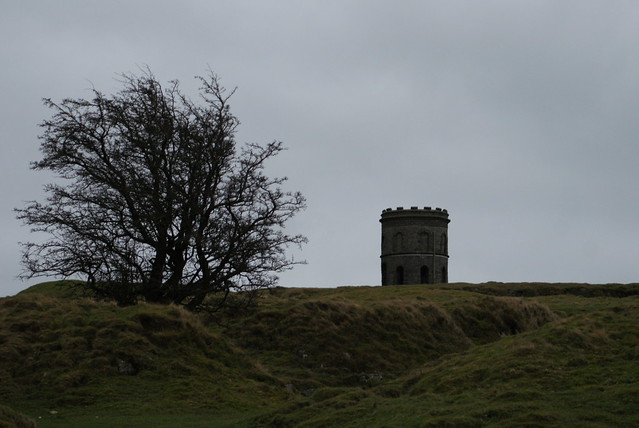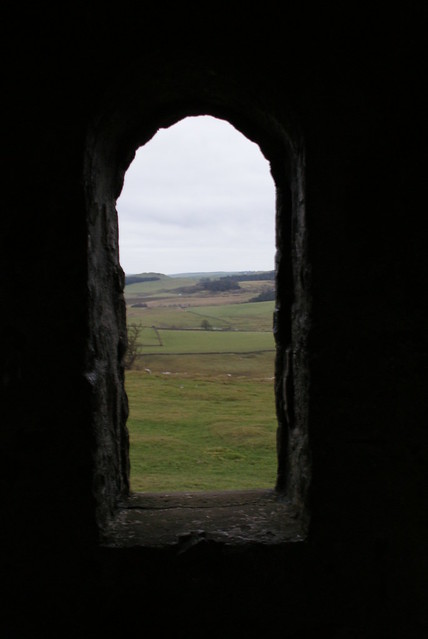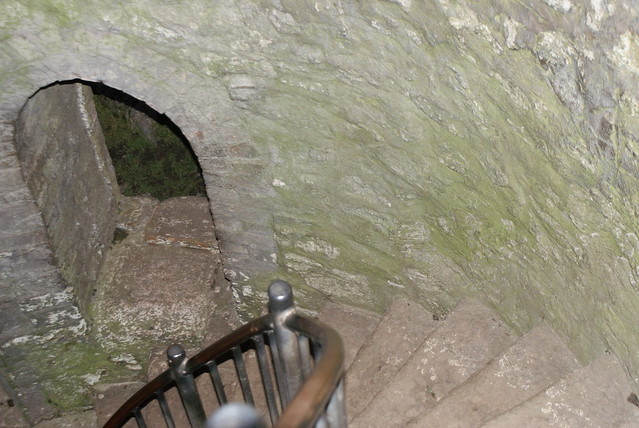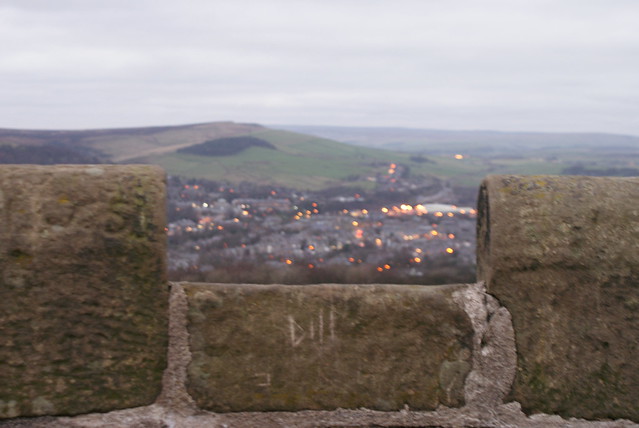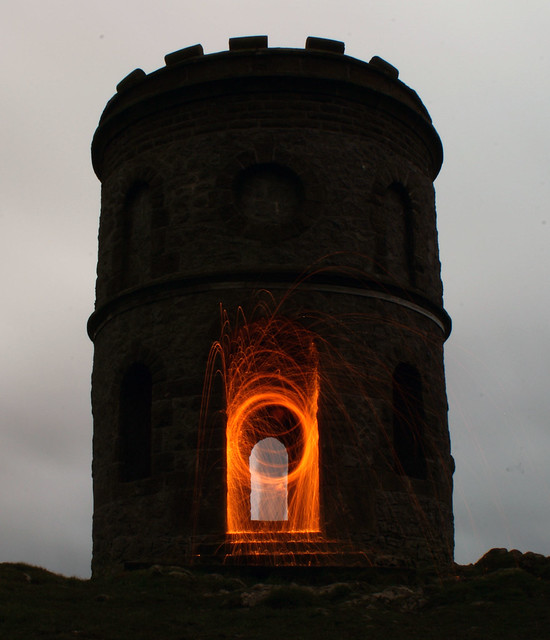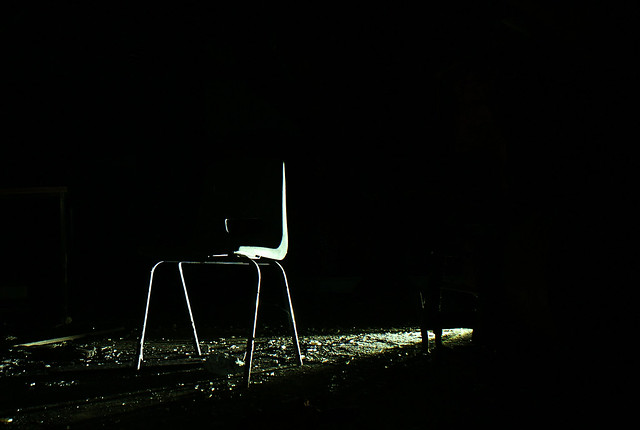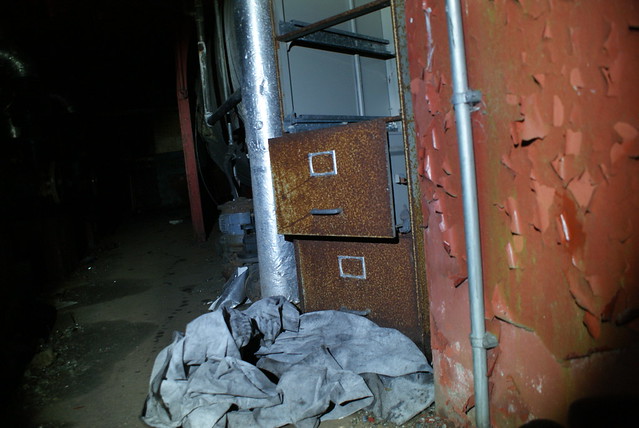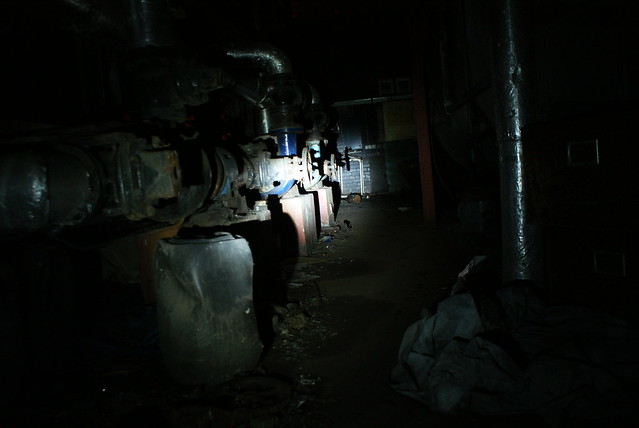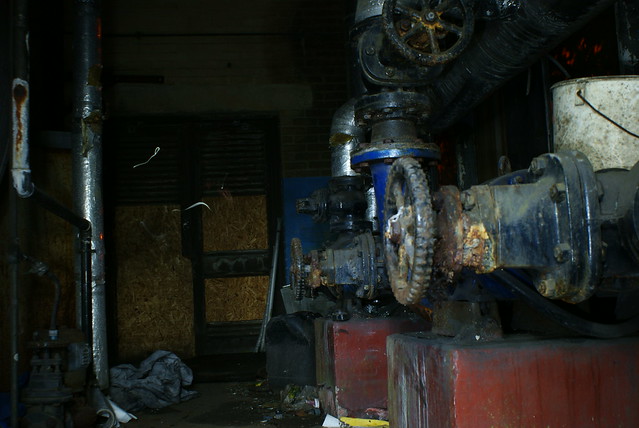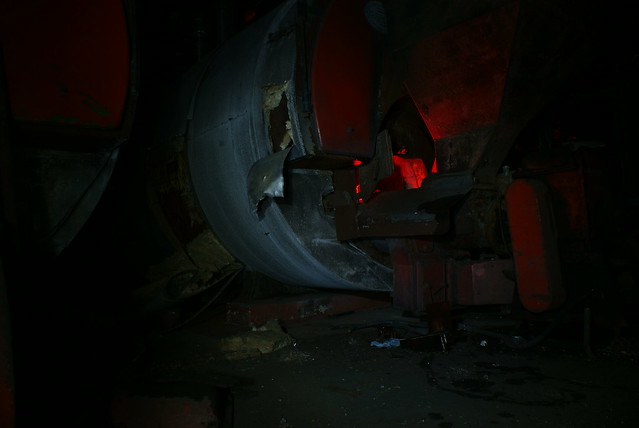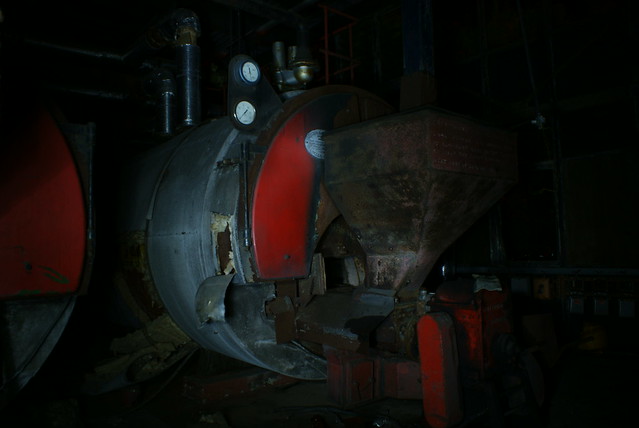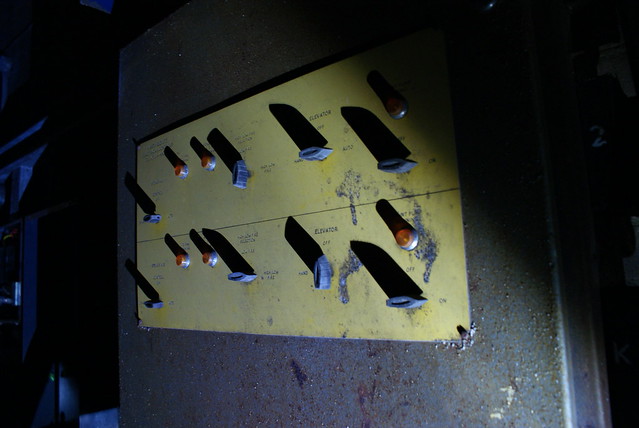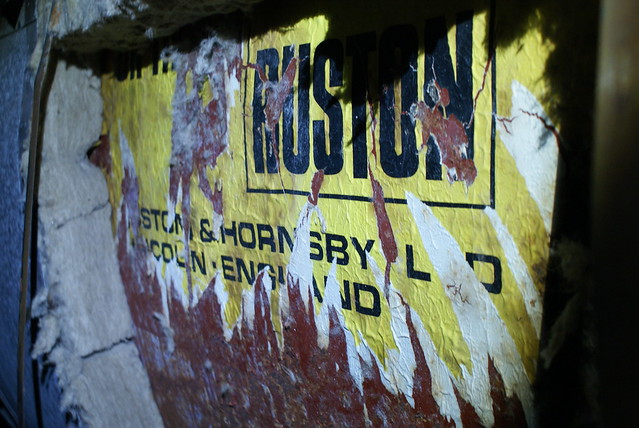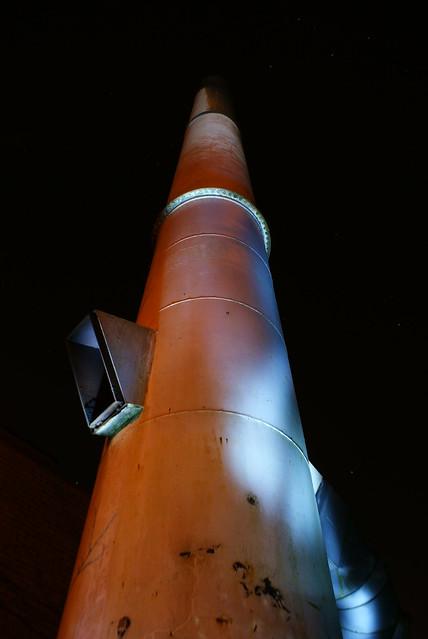Buxton Lime Firms (BLF)
The Solvay process (also referred to as the ammonia-soda process) is the major industrial process for the production of sodium carbonate and was developed by Ernest Solvay in the 1860s. The process uses salt brine either from inland sources or from the sea and limestone. Around 1874 John Brunner and Ludwig Mond established the Solvay process for the manufacture of soda ash at Northwich. Salt was readily available locally and limestone came from Derbyshire
Drive out of Buxton on the A6 (past the Morrisons) and a couple of minutes dwn the road you can't miss the imposing structure.
First building is a bunker type building.
1,
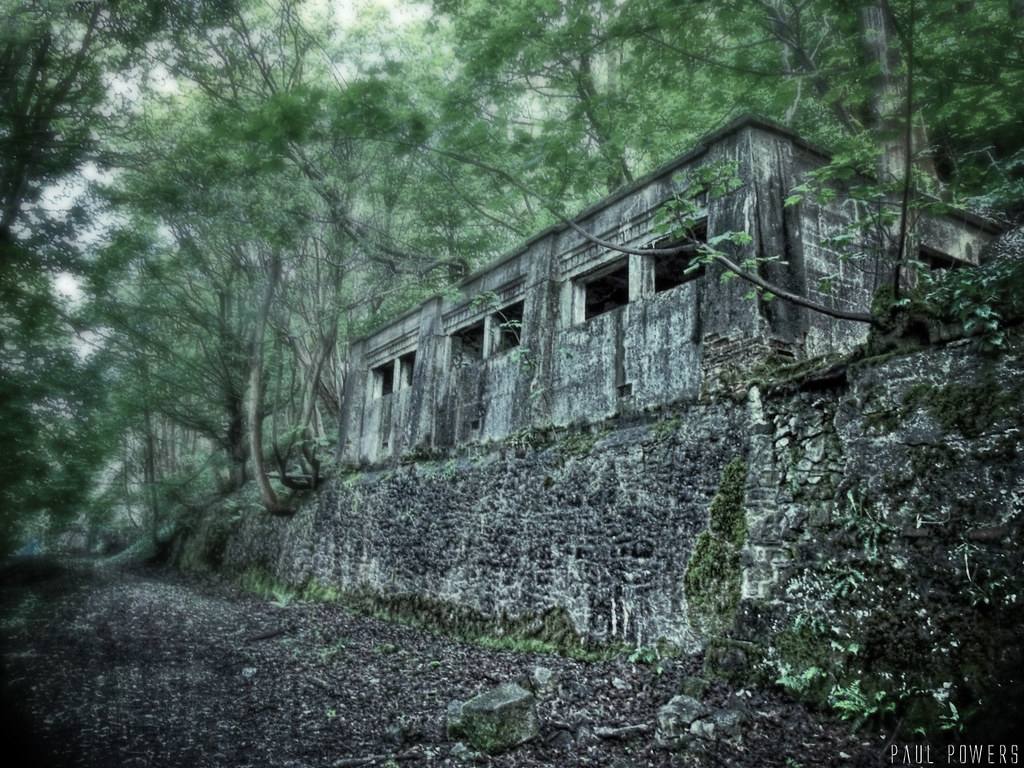
Access is pretty simple as you can walk into all the buildings
2,
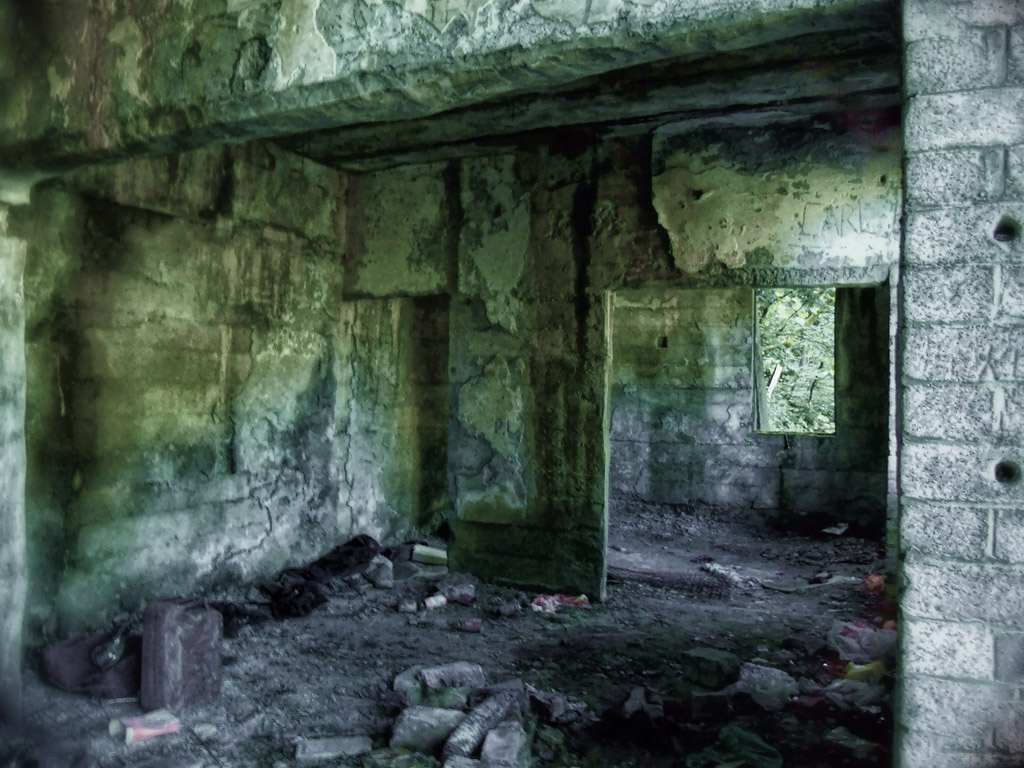
The largest structure is massive Lime Kiln which is reminiscent of an temple
3,

4,
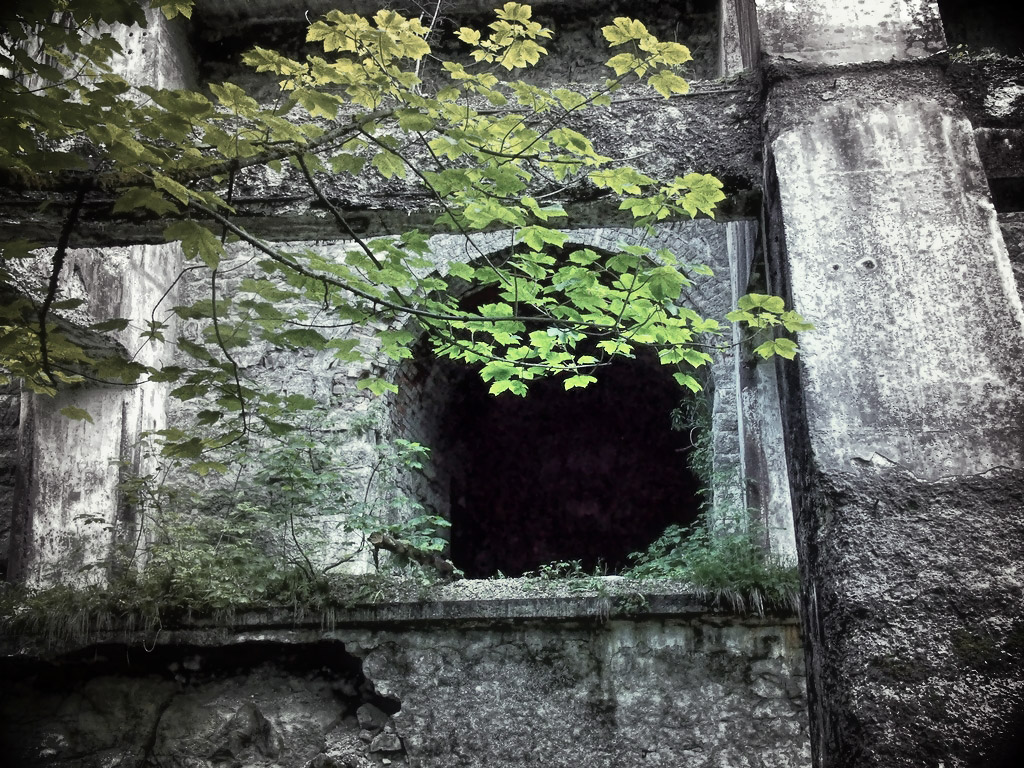
5,

Further along are Hoppers
6,

Thanks for looking

